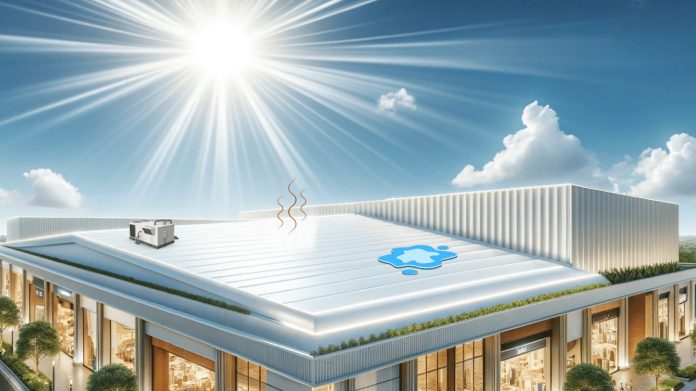NanoTech Materials and Cool Roof Coating Systems are joining forces to install cool roof coatings as a durable, low-maintenance solution to combat high indoor temperatures in Arizona.
NanoTech’s cool roof coat offers an alternative to costly roof replacements, and its durable, elastic polymer includes a heat-rejection technology that may cut indoor temperatures by 25 to 30 degrees Fahrenheit. The roof coat product may also reduce emissions by about 76 tons per year for a 25,000-square-foot building. The coating is weather-resistant and reportedly delivers up to 96% cool roof performance after 10 years.
“Put simply, the heat-rejection performance of NanoTech Cool Roof Coat is so compelling that Tesson decided to form an Arizona-based company to tackle one of the hottest markets in the U.S. directly,” said Brett Tesson, president of Cool Roof Coating Systems. “During my two decades in the roofing industry, NanoTech Cool Roof Coat is by far the most game-changing product for the roof restoration business because it allows us to coat, waterproof and protect, while adding unprecedented savings in HVAC cooling for our customers.”
Cool Roof Coating Systems, which is a subsidiary of Tesson Roofing, aims to enhance the longevity of building structures while reducing energy consumption, both of which allow for building emissions reductions. The building sector accounts for about 30% of global energy consumption, but solutions such as cool roofing and energy efficiency improvements allow for significant cost and energy savings.
Small Changes Deliver Big Impacts on Building Emissions, Cooling Energy Intensity
As global temperatures increase and demand for cooling rises accordingly, the building sector has explored multiple ways to achieve adequate cooling without increasing emissions.
Through a study conducted last year, the Department of Energy has confirmed the impact of using cool roofing materials as a way to reduce air conditioning needs and lower energy costs. Cool roofing was found to lower energy demand by nearly 17%, while also offering a less costly option than other cool roofing options studied, including vegetation and solar panels.
Reducing power consumption through other passive cooling measures like insulation and natural shading may also be implemented as a way to avoid the purchase of new cooling equipment. Smart HVAC systems have also been found to save on energy costs while reducing emissions without a complete overhaul of a given building’s existing cooling system.
www.environmentenergyleader.com
https://www.environmentenergyleader.com/2024/01/cool-roofing-initiative-to-address-record-breaking-heat-in-arizona/













